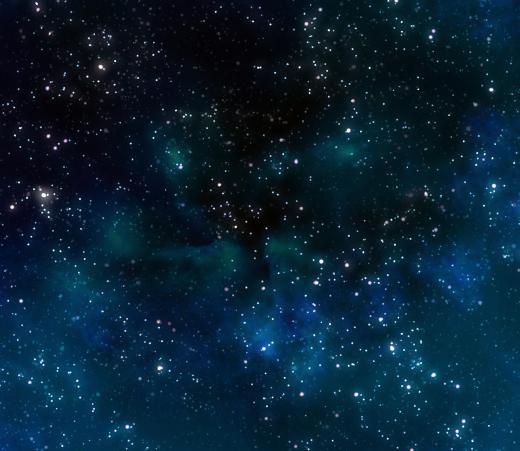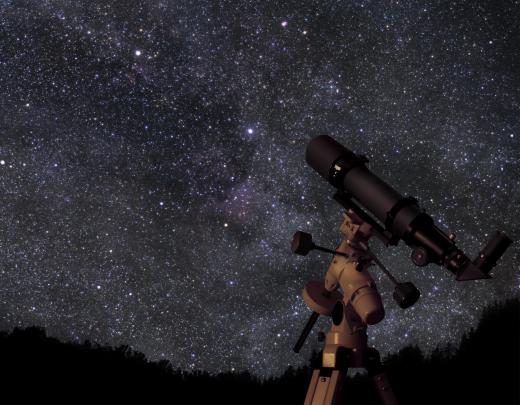What is a Protostar?
 Mary McMahon
Mary McMahon
A protostar is a young star which is in the early stages of formation, before it reaches the main sequence stage. This stage of star formation can last 100,000 years or more, depending on the size of the star. Astronomers have largely hypothesized about the protostar stage, as it is difficult to observe, although the basics of the hypothesis make sense, given what is known both about stars and about the universe in general.
This stage starts with a molecular cloud, a swirling mass of molecules which can vary in composition. The molecular cloud starts to contract and fragment, with each fragment in the cloud having the potential to develop into a star. As the fragments grow, they gain mass, which increases their gravitational attraction, and as a result, they start to attract other molecules, developing into a protostar. The process of adding mass is known as accretion.

Accretion happens behind a dense molecular cloud. In fact, visible light inside the cloud is blocked, requiring observation with infrared and other types of imaging equipment to see what is going on inside. In a protostar, nuclear fusion is not yet happening, and the star is very unstable. The star gains mass and heat as it accretes materials. As it matures, it reaches a state of equilibrium, turning into a pre main sequence star which will eventually develop into a main sequence star once the star starts to derive energy through nuclear reactions.

New stars are constantly being born across the universe, and stars in a wide variety of life stages can be observed by astronomers who have the right equipment and know where to look. The more observations made, the more can be learned about stars and how they function. This information can be used to gather data about the age of star systems as well as the age of the universe, and to identify areas of the universe which may bear closer observation.
Looking at a protostar is challenging, due to the block created by the molecular cloud. In addition to blocking visible light, the cloud can also block other forms of radiation, and the star itself can become a radiation block as well, making it even harder to spot. Humans have identified a number of areas in the universe where they believe that stars are forming, with strong evidence of protostars in these locations, but actually making observations in these areas is tricky.
AS FEATURED ON:
AS FEATURED ON:












Discussion Comments
What are the colors of the protostar?
Is a protostar 15,000,000 degrees?
One of my friends from college told me that the Hubble Space Telescope has been able to observe some protostars and scientists have been able to take some pretty good pictures of new stars at different stages.
Another interesting fact is that protostars are started in clusters. At certain stages, they glow a dull red color.
Some new stars - the O-type live just a few million years. This is actually a short time for a star.
Your can read more and see pictures of protostars by googling protostar. There's lots of entries.
A few weeks ago, I saw a documentary on how scientists think that the earth was formed. I was in awe watching all the powerful explosions etc. that probably took place, and it took millions and millions of years.
Now that scientists can get information about how protostars are formed, it's kind of like a mini lesson on the birth of the earth.
It's too bad that the scientists can't see the new stars too well because of the blocking cloud.
Post your comments